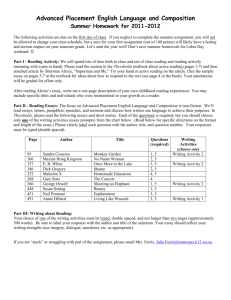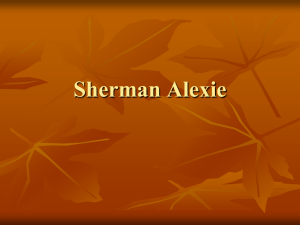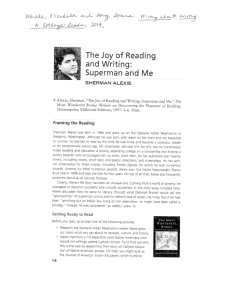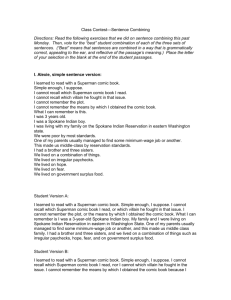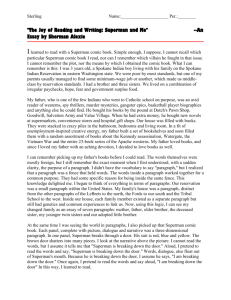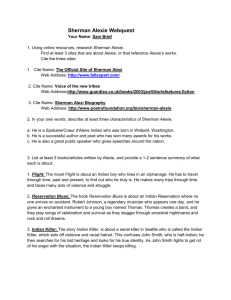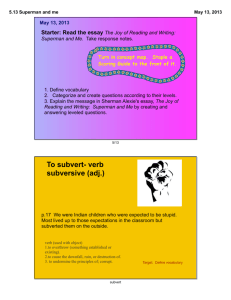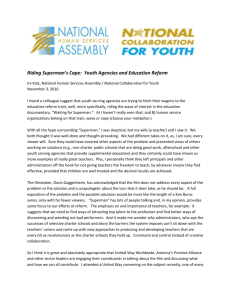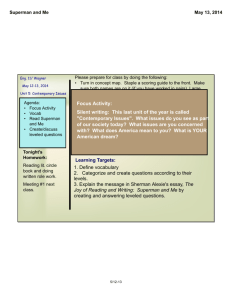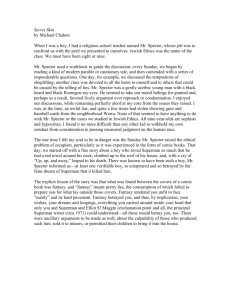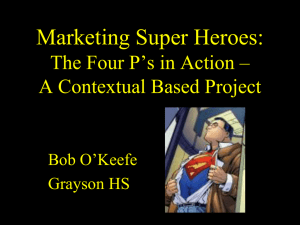Reading & Writing Narrative Nonfiction
advertisement
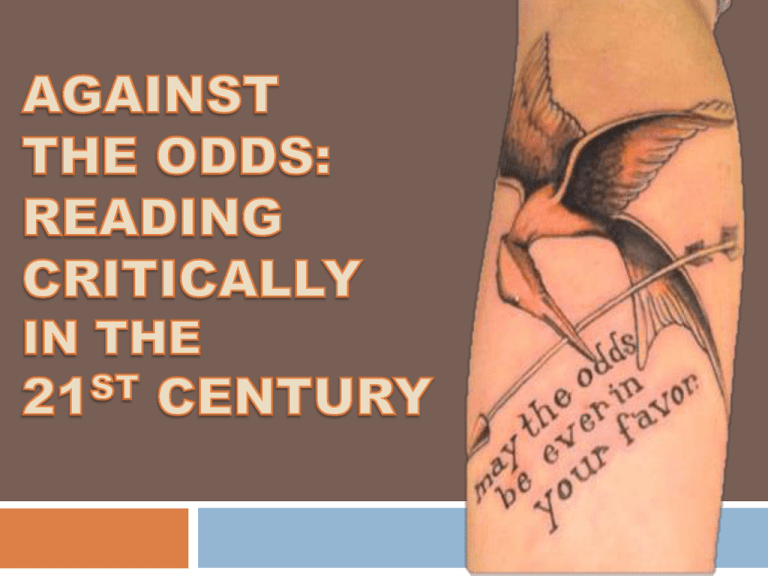
The Making Visible Project at Chabot College (18 minutes) As you watch the film, write down comments and/or situations to which you can relate. 1. define metacognition; 2. describe how it is used by good readers; 3. describe how lack of it creates poor readers; 4. practice “Inquiry” in reading; 5. learn to use Charting to improve reading skills; 6. learn a way to be a strategic, reflective, and self-regulating reader. “meta” after or beyond “cognitive” mental process of knowing They help you: be a person who has learned to learn; know the stages in the process of learning and understand your preferred approaches to it; identify and overcome blocks to learning so you can bring learning from academic to on-the-job/career situations. Readers with poor metacognitive skills: often finish reading a passage without even knowing that they have not understood it; are unable to process and use what they have read; are unable to make adjustments in their learning processes and monitor their own learning; approach reading with a negative attitude; set themselves up to fail. Practice INQUIRY in-kwuh-ree (n), inquiries the act of seeking truth, information, or knowledge an the investigation act of inquiring or of seeking information by questioning A Reading Inquiry HOW you read is as important as WHAT you read. Should we read everything the same? The Challenge We read different texts in different ways. Reading is an invisible process. For effective readers (or when one is reading effectively) this is especially true. In order to conduct an inquiry into what we do when we read, we need to make this invisible process visible. Begin by Understanding the Difference Between Content & Form Content is WHAT a text is about, in the words, what the author is saying. Form is HOW a text is written, in other words, what the author is doing. “Superman and Me” by Sherman Alexie I learned to read with a Superman comic book. Simple enough, I suppose. I cannot recall which particular Superman comic book I read, nor can I remember which villain he fought in that issue. I cannot remember the plot, nor the means by which I obtained the comic book. What I can remember is this: I was 3 years old, a Spokane Indian boy living with his family on the Spokane Indian Reservation in eastern Washington state. We were poor by most standards, but one of my parents usually managed to find some minimum-wage job or another, which made us middle- class by reservation standards. I had a brother and three sisters. We lived on a combination of irregular paychecks, hope, fear and government surplus food. “Superman and Me” by Sherman Alexie I learned to read with a Superman comic book. Simple enough, I suppose. I cannot recall which particular Superman comic book I read, nor can I remember which villain he fought in that issue. I cannot remember the plot, nor the means by which I obtained the comic book. What I can remember is this: I was 3 years old, a Spokane Indian boy living with his family on the Spokane Indian Reservation in eastern Washington state. We were poor by most standards, but one of my parents usually managed to find some minimum-wage job or another, which made us middle- class by reservation standards. I had a brother and three sisters. We lived on a combination of irregular paychecks, hope, fear and government surplus food. For the first paragraph in Sherman Alexie’s “Superman and Me” Sherman Alexie introduces the concept that he learned to read from a Superman comic book by illustrating what he does and does not remember, and then he describes how he grew up in poverty, but not without hope, on a Spokane Indian Reservation.
